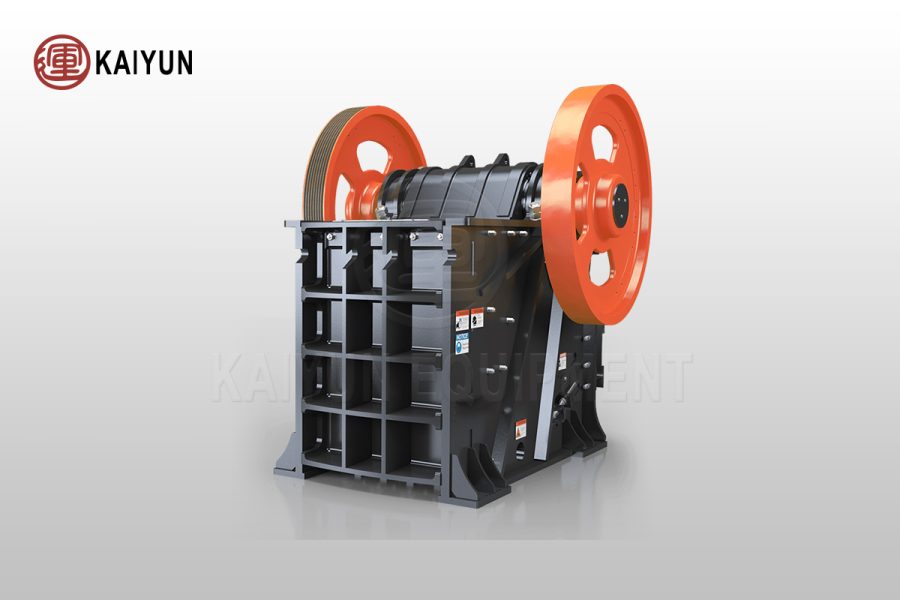The jaw crusher is the most common primary crushing equipment used in mines, mineral processing plants, sand and gravel yards, and construction aggregate production lines. It is popular for its simple structure, high crushing ratio, and high output. However, due to its high operating inertia, heavy loads, hard materials, and harsh operating environment, various malfunctions are inevitable over time.
To ensure stable operation, extend the lifespan, and maximize economic benefits of the jaw crusher, proper operation, regular maintenance, and timely overhauls are essential in daily operations. This article, drawing on practical experience, will detail common jaw crusher malfunctions, their causes, and solutions, and provide practical maintenance recommendations.

Common Jaw Crusher Faults and Solutions
Metallic Clashing Sounds from the Lower Part During Idle Operation
If a sharp metallic clashing sound is heard from the lower part of the jaw crusher during idling, the following may be the cause:
The movable jaw and fixed jaw tooth plates are colliding with each other.
Cause: The discharge opening is set too small, resulting in insufficient jaw plate clearance.
Solution: Adjust the discharge opening to the appropriate size.
One Stop Customized Plant Selection Solution
We Provide EPC Services
The thrust plate support or shim adjustment mechanism is colliding.
Cause: The pull rod buffer spring has lost its elasticity or is damaged, resulting in insufficient spring compression. Looseness of the movable jaw plate or toggle plate is caused by a loose connection to the machine body.
Solution: Tighten the compression nut, restore the spring preload, and replace the spring if necessary.
The toggle plate support slider is damaged or loose.
Cause: The toggle plate head is severely worn, resulting in unstable support.
Solution: Replace the slider or toggle plate promptly.
There is a metallic clashing sound and the liner is vibrating during operation.
Cause Analysis: The crushing chamber side liners and movable and fixed jaw teeth are loose, or the fastening screws are loose or broken.
Solution: Stop the machine for inspection, tighten the screws, or replace damaged parts to ensure the liner is stable.
Frequent breakage of the rear toggle plate.
Functional Description: The rear toggle plate not only transmits power but also provides an overload safety function.
Possible Causes:
Insufficient strength in the center of the toggle plate.
Overtightening of the tie rod spring, rendering the safety function ineffective.
Solution: Loosen the spring appropriately to avoid prolonged overload.
The flywheel rotates but the crusher does not operate.
Cause Analysis:
Damaged tie rod spring or tie rod.
Disengaged tie rod nut, causing the toggle plate to detach from the support slide.
Broken toggle plate has fallen off.
Solution: Replace damaged parts and ensure proper installation.
The flywheel oscillates noticeably, and the eccentric shaft speed decreases.
Cause Analysis: The key connection between the pulley and the flywheel is loose or damaged, causing the wheel shaft to be out of sync.
Solution: Check and tighten the key connection, and replace damaged parts if necessary.
Crushed product particle size becomes coarser.
Cause Analysis: Severe wear on the lower portion of the crushing liner.
Solution: Swap the tooth plates up and down or replace with new ones, and adjust the discharge opening size.
Common Problems and Early Signs of Jaw Crusher Problems
To detect problems before they escalate, the following signals can be used:
Abnormal noise
Metal clashing, grinding, or high-frequency squealing.
Increased vibration
Frame shaking or noticeable flywheel oscillation.
Decreased output
Reduced crushing capacity and coarser discharge particle size.
Increased energy consumption
Increased motor load and abnormal operating current.
Frequent shutdowns
Unplanned downtime due to material jamming or component damage.
Jaw Crusher Maintenance and Repair Maintenance Recommendations
Regularly inspect wearing parts
Tie rod springs, toggle plates, tooth plates, liners, sliders, etc.
Lubrication Management
Add or replace grease at specified intervals to maintain bearings in good working condition.
Discharge Port Adjustment
Regularly measure and adjust the discharge port size to ensure a stable finished product particle size.
Bolt Tightening
Check bolts in key locations weekly to prevent equipment damage caused by loosening.
Maintain Cleanliness
Clean up material accumulation inside and around the crusher to prevent dust from entering the bearings and lubrication system.
Maintain Maintenance Records
Record repairs, part replacements, and operational anomalies for analysis and preventive maintenance.
Economic Benefits and Return on Investment (How a Jaw Crusher Helps You Make Money)
Selecting the right jaw crusher and maintaining good maintenance will not only reduce failure rates but also increase production and equipment utilization, thereby improving your return on investment (ROI). Example:
Daily production of 200 tons of crushed stone, with a selling price of $20/ton
Daily output value = $4,000
After deducting operating costs (labor, consumables, electricity, etc.), $1,200
Daily net profit of approximately $2,800
Under these production conditions, the equipment investment typically pays for itself within 3-6 months.
Conclusion
Jaw crushers are core equipment in mining and sand and gravel production. Proper use, timely maintenance, and rapid troubleshooting not only extend the life of the equipment but also help you reduce production costs, increase output, and increase profits.
If you would like to learn more about selecting a jaw crusher that suits your ore type and production requirements, or would like a detailed return on investment analysis, please contact our engineering team.